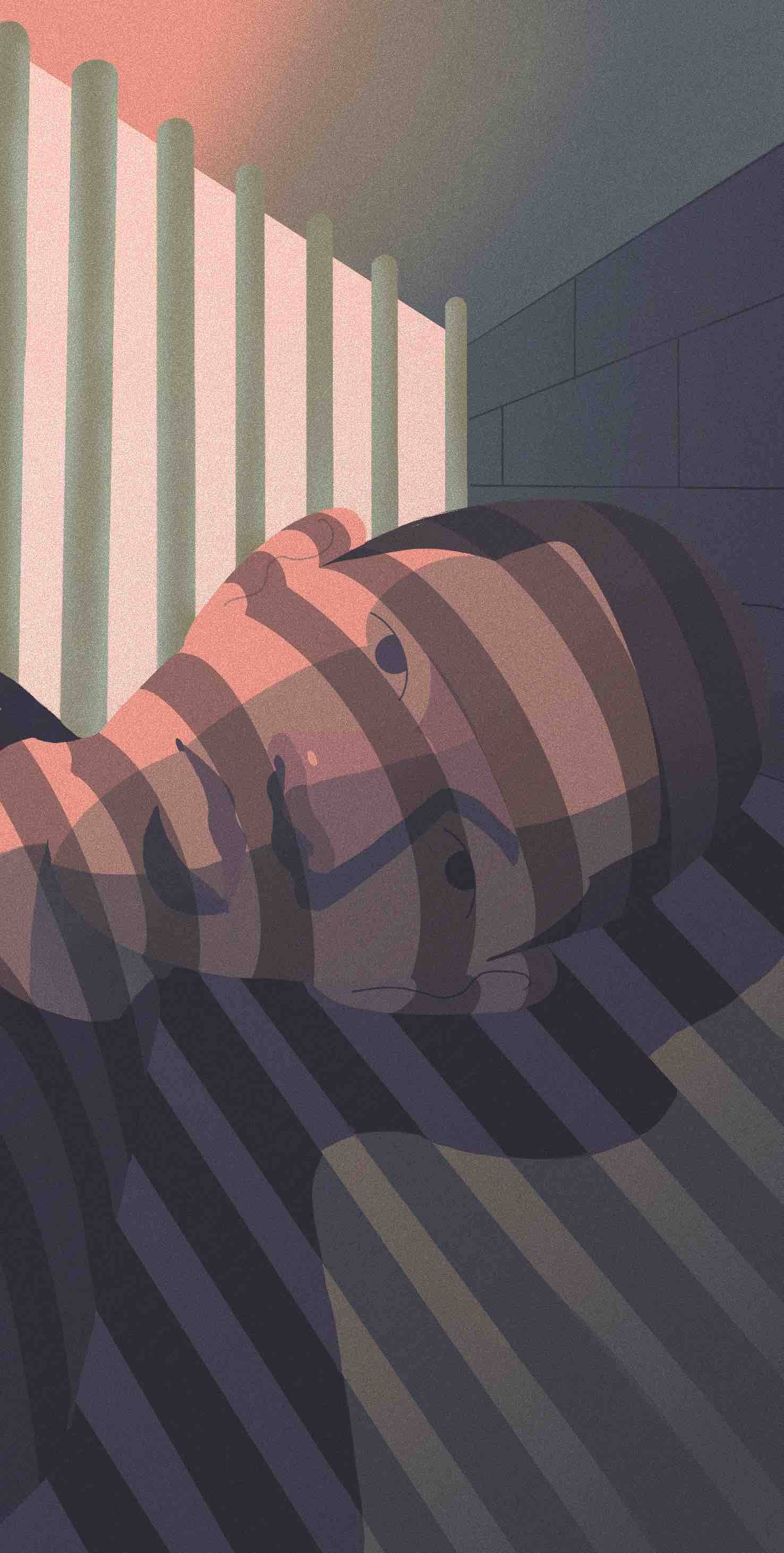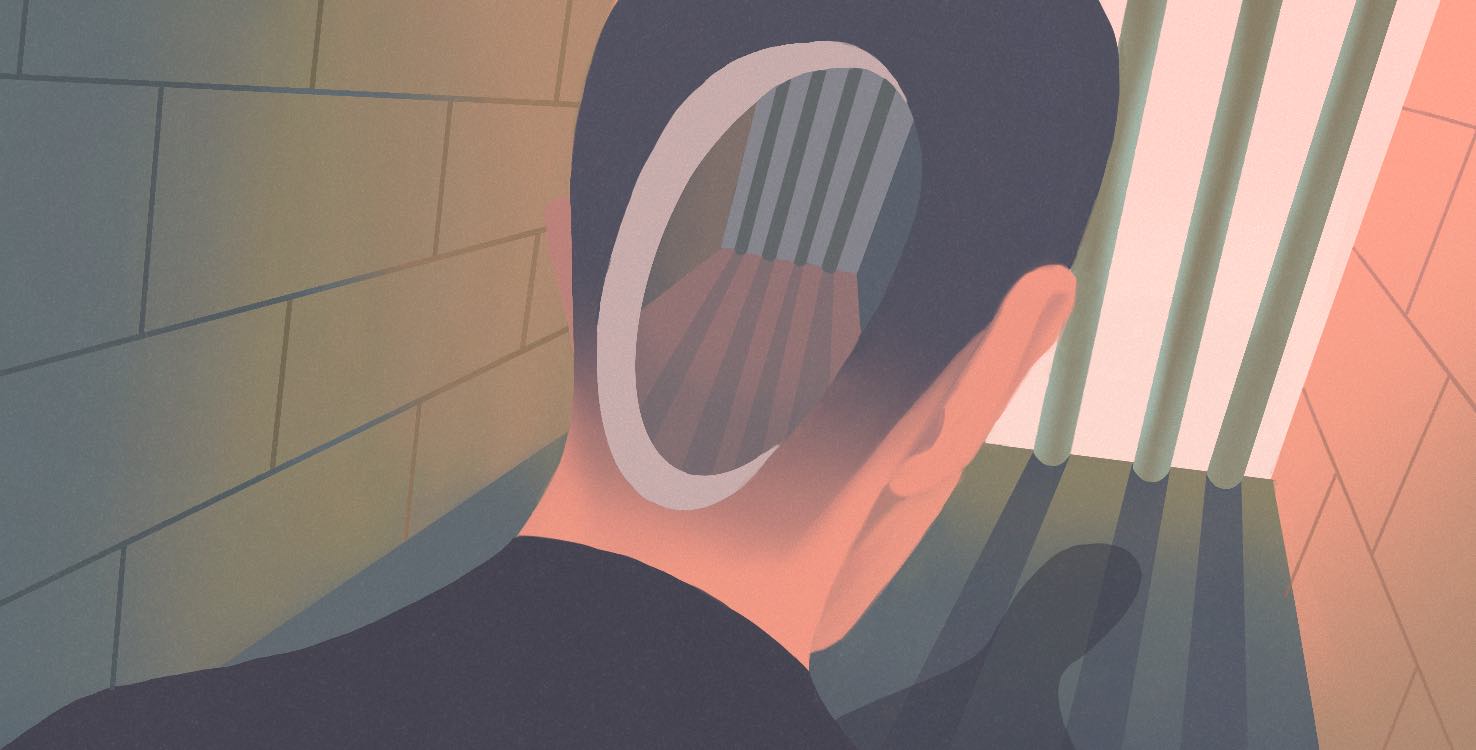How involuntary solitary confinement infringes upon the rights of incarcerated LGBTQ+ individuals
With homophobia and transphobia deeply entrenched in the United States and its institutions, it is unsurprising that the LGBTQ+ community is vulnerable not only in society at large, but behind bars too. LGBTQ+ individuals are disproportionately criminalized, jailed, and prosecuted, with an overall likelihood of incarceration three times higher than that of heterosexual people. Reports of homophobic and transphobic abuse against LGBTQ+ individuals while incarcerated are also well-documented.
Solitary confinement, reported to have been experienced by up to 85 percent of incarcerated LGBTQ+ people, is frequently offered as a “solution” to protect these individuals from abuse. However, this solution is often applied to incarcerated LGBTQ+ people against their own will. In fact, this is a practice that nearly half of incarcerated LGBTQ+ people have experienced and that must be banned in the US prison system. Solitary confinement, which typically involves spending 23 hours a day isolated in a cell, has long been denounced as inhumane by organizations such as the United Nations Committee Against Torture. Situating this harrowing practice in the context of broader discrimination against the LGBTQ+ community, however, may help explain why 38 percent of incarcerated LGBTQ+ people have been placed in solitary at their own request. Incidents of abuse against LGBTQ+ individuals, committed by both fellow incarcerated people and corrections staff, have been consistently reported in general prison environments. LGBTQ+ individuals are considered some of the most at-risk within the prison population, vulnerable to various forms of physical, emotional, and sexual abuse. Compared to incarcerated heterosexual people, women who have sex with women are 2.6 times more likely to be sexually victimized than straight women by other incarcerated people and correctional staff. For men who have sex with men, this number jumps to 10 times more likely than straight men. A case study examining California correctional facilities found that these rates are even worse for transgender women who, when placed in men’s prisons, are 13 times more likely than their cisgender counterparts to be sexually assaulted. Findings like these illustrate how LGBTQ+ people in correctional systems experience intersecting, multiplied experiences of marginalization based on sexual or gender identity.

Beyond the abuse that LGBTQ+ individuals face behind bars, wider LGBTQ+ discrimination lends insight into the factors that disproportionately lead LGBTQ+ people into contact with the criminal justice system in the first place. LGBTQ+ people are overrepresented at every level of the justice system, including arrest, probation, sentencing, and parole. Strikingly, a third of women in prison and nearly a quarter of women in jail identify as lesbian or bisexual, compared to the 6.4 percent of self-identified lesbian or bisexual women in the general US population.
These rates can largely be attributed to the fact that LGBTQ+ people have been historically overpoliced and criminalized, notably for practices such as sex work and illicit substance use. Behavioral models from perspectives in clinical psychology and public health help to explain this phenomenon. One of these models, minority stress theory, posits that LGBTQ+ people experience unique, chronic, and socially-based stress and stigma due to institutional and interpersonal forces. As a result, LGBTQ+ people are disproportionately vulnerable and at greater risk of harmful behaviors like substance abuse. This theory demonstrates that compounded discrimination against the LGBTQ+ community has a direct and tangible impact on these individuals’ interactions with the criminal justice system.
Identity-based discrimination tends to be even more acute for LGBTQ+ people of color, who are more likely than their white counterparts to be placed in solitary confinement. LGBTQ+ prisoner advocacy group Black & Pink attributes this tendency to the attitude that “even in prison, white life is more valuable or worthy of protection.” The added dimension of racial or ethnic minority status, then, can exacerbate an intersectional vulnerability within a larger carceral state rooted in white supremacy.
The LGBTQ+ inmate population is clearly an already-vulnerable group experiencing even more pronounced victimization in the legal system and carceral state apparatuses. Thus, incarcerated LGBTQ+ people’s experiences of solitary confinement must be critically assessed to evaluate the practices that supposedly seek to protect these individuals. While the Prison Rape Elimination Act ratifies that solitary confinement should be considered a last resort to other alternatives of protection, Black & Pink reports that incarcerated LGBTQ+ people are nonetheless commonly subjected to this practice.
These issues indicate a clear need for policy solutions to ensure that incarcerated LGBTQ+ individuals’ rights are protected. As a first step, US prisons must ratify protocols that ban placing LGBTQ+ incarcerated people in solitary confinement for their own “protection” if such placement goes against their will. To institutionalize and validate an inmate’s agency, the choice to be placed in solitary confinement should be formally requested and documented in the presence of prisoner advocates and witnesses. This kind of uniform protocol documenting the expressed willingness of LGBTQ+ incarcerated people could help reduce instances of forced solitary confinement.
It is also critical that US prison systems produce uniform and consistent protocol and reporting systems through which prison staff could document reasons for solitary confinement. Solitary confinement is technically only permitted in the absence of other alternatives. As such, prison staff must explicitly and meticulously detail why they believe solitary confinement is justified in each instance of its use. Establishing such uniform forms of documentation would be a step toward accountability. Relevant advocates, including attorneys and researchers, should have access to such records, from which they can glean data on the contexts in which solitary confinement may be unrightfully forced upon incarcerated people. Hopefully, this practice could also pave the way for future advocacy surrounding the rights of incarcerated individuals and more accountability regarding their protection.
At the end of the day, solitary confinement is an inhumane practice that must ultimately be banned. In the meantime, however, with input and feedback from incarcerated people, formal documentation of choices and transparent reporting systems might begin to challenge such a systemic violation of incarcerated LGBTQ+ people’s rights and agency.
